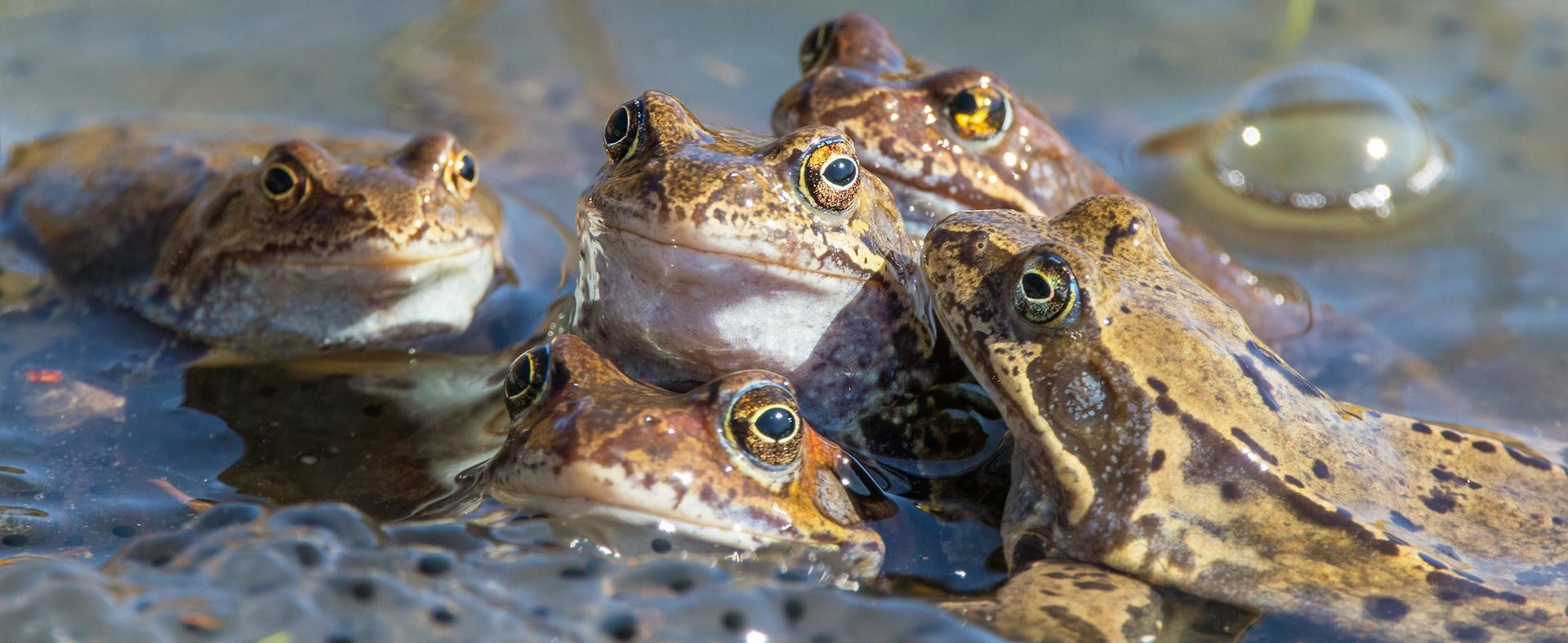Answers about
frogs in the Bible
Hebrew: tsepharde'a, meaning a “marsh-leaper”
This amphibian is mentioned in the Old Testament in connection with one of the plagues God sent on the land of Egypt (Exodus 8:2-14; Psalm 78:45; 105:30).
And the Nile will swarm with frogs, and they will go up and come into your house and into your bedroom and on your bed and into the houses of your servants and on your people and into your ovens and into your kneading bowls. So the frogs will come up on you and on your people and on all your servants. —Exodus 8:3-4

God’s choice of using frogs as a plague on the Egyptians was a direct attack on their foolish belief in Heqet (Heqat, Heket), the Egyptian goddess of fertility, who was represented as a frog and was identified with the false goddess Hathor.
As a fertility goddess, she was explicitly associated with the last stages of the flooding of the Nile, and so with the germination of their seed crops. Heqet’s name was part of the names of some high-born Second Dynasty individuals buried at Helwan, such as prince Nisuheqet, and was mentioned on a stela of Wepemnofret and in the Pyramid Texts.

Early frog statuettes are often thought to be depictions of her. Her supposed husband Khnum was said to be responsible for forming the bodies of new children on his potter’s wheel. In the Osiris myth, it was Heqet who breathed life into the new body of Horus at birth, as she was a goddess of the last moments of birth.
Frogs in the Law of Moses
In the Law of Moses, frogs are considered unclean animals. They were not to be eaten by the children of Israel. The biblical laws about uncleanness were removed in New Testament times.
Israel’s frogs
The only species of frog naturally existing in Israel is said to be the well-known common green frog (Rana esculenta aka Pelophylax klepton esculentus), which some people in the world eat, particularly in France as well as Germany and Italy.
New Testament
In the New Testament the word frogs occurs only in Revelation 16, where they are symbolic of gross demonic uncleanness.
Then I saw coming out of the mouth of the dragon and out of the mouth of the beast and out of the mouth of the false prophet, three unclean spirits like frogs —Rev. 16:13
More information
- Has it ever rained frogs or fish or any other strange things?
- Sounds of frogs
- Animals of the Bible
- Plagues in the Bible
- Idolatry and false gods in the Bible
- About idols in the Bible
- Idol worshippers kissed the idols
- What is a false prophet? and what is his or her fate?
- About dragons in the Bible
- What does the Bible say about demons?
